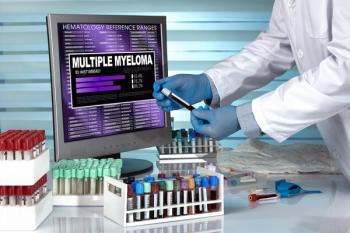
Nomogram Developed to Predict Lupus Nephritis Outcomes in SLE
The tool relies on factors including creatinine, anti–double-stranded DNA antibody, and gender, among others.
A team of investigators has developed a 10-point clinical prediction model they say can help determine the probability of remission in patients with
The authors say the tool could provide a simple strategy to help guide patients’ treatment.
Determining which patients are most likely to deteriorate or experience remission can be difficult, they said. Further, previous investigations examining clinical and serological biomarkers have not shown the ability to adequately predict outcomes.
“Despite a substantial improvement in SLE diagnosis and treatment over the years, the prognosis of patients with LN is difficult to predict,” the investigators wrote.
Since individual biomarkers like serum creatinine and proteinuria levels have not translated into strong predictive biomarkers, the investigators wanted to see whether tools like machine learning might help identify more rigorous biomarkers. They noted that nomograms—which utilize a diverse range of prognostic factors to estimate the likelihood of a particular clinical event—are already in use in oncology and other areas of medicine.
The investigators identified 301 patients with a diagnosis of LN that was backed by a renal biopsy. Most of the patients (n = 210) were put into a model-construction cohort. The remaining 91 patients were used as a validation cohort. The investigators used a range of patient data and variables and tracked patient outcomes.
The authors used the least absolute shrinkage and selection operator (LASSO) regression analysis technique to select patient variables that appeared to be significant. They then used those factors to create a Cox regression predictive model, which was verified and tested in the latter group.
In the end, 10 factors were included in the final prediction model: the course of LN, gender, 24-hour proteinuria, creatinine, triglycerides, fibrinogen (FIB), Complement C3, anti–double-stranded DNA (anti-dsDNA) antibody, tubular atrophy, and classification of kidney biopsy. In the case of anti-dsDNA, the authors said the factor is based on whether the patient had a positive or negative qualitative result for the antibody at the time of their inclusion in the study.
The authors then created a nomogram to predict the likelihood of remission at 1, 2, and 5 years, finding areas under the curve (AUC) of 81.42, 87.20, and 92.81, respectively, in the validation group. Those AUCs translate into good prediction performance, the authors said. They noted that their model includes some previously investigated factors, but also some that are not well understood.
“Compared with previous studies, our study shows that increased FIB levels are significantly associated with improved outcome of patients with LN and may have an effect on the outcome,” the authors wrote. “This finding may provide a new direction for future research.”
The investigators said their model amounts to the first user-friendly prediction tool for LN outcomes.
“This predictive model tool can be used in SLE patients before their kidney biopsies,” they wrote, adding that the tool could also be helpful in places where access to medical care is limited or in cases where it is not possible to perform a kidney biopsy.
“We hope that the nomogram can help clinicians in decision-making for the early assessment [of patients],” they concluded.
Reference
Kang Y, Zuo Y, He M, Duo L, Chen X, Tang W. Clinical predictive model to estimate probability of remission in patients with lupus nephritis. Int Immunopharmacol. 2022;110:108966. doi:10.1016/j.intimp.2022.108966
Newsletter
Stay ahead of policy, cost, and value—subscribe to AJMC for expert insights at the intersection of clinical care and health economics.













































